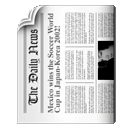Поиск :
Личный кабинет :
Электронный каталог: Ushkov, A. - Femtosecond Laser Ablation and Fragmentation for TMDC Nanoparticles Synthesis: A Comparative Study
Ushkov, A. - Femtosecond Laser Ablation and Fragmentation for TMDC Nanoparticles Synthesis: A Comparative Study

Статья
Автор: Ushkov, A.
Applied Surface Science: Femtosecond Laser Ablation and Fragmentation for TMDC Nanoparticles Synthesis: A Comparative Study
б.г.
ISBN отсутствует
Автор: Ushkov, A.
Applied Surface Science: Femtosecond Laser Ablation and Fragmentation for TMDC Nanoparticles Synthesis: A Comparative Study
б.г.
ISBN отсутствует
Статья
Ushkov, A.
Femtosecond Laser Ablation and Fragmentation for TMDC Nanoparticles Synthesis: A Comparative Study / A.Ushkov, N.Belozerova, [a.o.] // Applied Surface Science. – 2025. – Vol. 707. – P. 163547. – URL: https://doi.org/10.1016/j.apsusc.2025.163547. – Bibliogr.: 65.
Femtosecond laser ablation and fragmentation in liquids proved to be effective substrate- and additive-free methods for synthesis of stable, chemically pure colloids of transition metal dichalcogenide nanoparticles, which gained much attention due to their high refractive index and excitonic transitions in visible range. Taking into account that specific nanoparticles properties (i.e., crystallinity, average size) are required in various applications such as theranostics, Mie-tronics, SERS, the understanding of synthesis methods differences is crucially important. Here, we perform a comparative study of femtosecond laser ablation and fragmentation in liquid and reveal distinct features of both methods using a WSe&sub(2) crystal for tests. Although ablation and fragmentation are often considered as quite close techniques, we show the resulting nanoparticles are (poly)crystalline or amorphous with different size distributions. Moreover, it turned out that the femtosecond fragmentation outputs two types of nanoparticles – WSe&sub(2) and Se – at long fragmentation times. We demonstrate that WSe&sub(2) NPs give a SERS signal an order of magnitude stronger than flakes, which underscores the importance of material design for enhancing SERS sensitivity. Our results will be helpful for a broad optical and chemical communities and contribute to the growing understanding of layered materials’ role in plasmon-free SERS.
Спец.(статьи,препринты) = С 33 а - Нанофизика. Нанотехнология$
Спец.(статьи,препринты) = С 332.8 - Синхротронное излучение. Лазеры на свободных электронах. Получение и использование рентгеновских лучей
ОИЯИ = ОИЯИ (JINR)2025
Бюллетени = 46/025
Ushkov, A.
Femtosecond Laser Ablation and Fragmentation for TMDC Nanoparticles Synthesis: A Comparative Study / A.Ushkov, N.Belozerova, [a.o.] // Applied Surface Science. – 2025. – Vol. 707. – P. 163547. – URL: https://doi.org/10.1016/j.apsusc.2025.163547. – Bibliogr.: 65.
Femtosecond laser ablation and fragmentation in liquids proved to be effective substrate- and additive-free methods for synthesis of stable, chemically pure colloids of transition metal dichalcogenide nanoparticles, which gained much attention due to their high refractive index and excitonic transitions in visible range. Taking into account that specific nanoparticles properties (i.e., crystallinity, average size) are required in various applications such as theranostics, Mie-tronics, SERS, the understanding of synthesis methods differences is crucially important. Here, we perform a comparative study of femtosecond laser ablation and fragmentation in liquid and reveal distinct features of both methods using a WSe&sub(2) crystal for tests. Although ablation and fragmentation are often considered as quite close techniques, we show the resulting nanoparticles are (poly)crystalline or amorphous with different size distributions. Moreover, it turned out that the femtosecond fragmentation outputs two types of nanoparticles – WSe&sub(2) and Se – at long fragmentation times. We demonstrate that WSe&sub(2) NPs give a SERS signal an order of magnitude stronger than flakes, which underscores the importance of material design for enhancing SERS sensitivity. Our results will be helpful for a broad optical and chemical communities and contribute to the growing understanding of layered materials’ role in plasmon-free SERS.
Спец.(статьи,препринты) = С 33 а - Нанофизика. Нанотехнология$
Спец.(статьи,препринты) = С 332.8 - Синхротронное излучение. Лазеры на свободных электронах. Получение и использование рентгеновских лучей
ОИЯИ = ОИЯИ (JINR)2025
Бюллетени = 46/025
 На полку
На полку 
